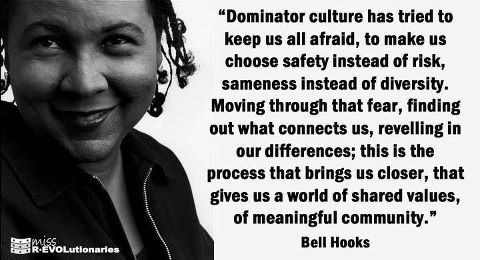The Male Gaze & Patriarchy
The term gaze is simple: to visually look at something, whether it be people, surroundings, and art. But when the word “male” is incorporated, it becomes a whole new meaning. The term implies that art is visually represented by what is seen through a man’s eyes. A male’s perspective is the reflection of certain art, giving the audience a chance to be able to see through him, but can also be interpreted in their own ways. We live in a world where men undeniably have dominance over women. Furthermore, dominance has been strongly incorporated into society.
 |
| Feminist Movement- "This insults women" |
|
|
|
Too often are women used to attract viewers, specifically men. In many movies, pieces of art, and even magazines, women are mostly used as an ‘object’ to convey sex. Today, the use of women objectification is significantly affecting society because of the way women are exposed; suddenly, women feel that they have to look a certain way in order to be accepted. If she is less than of what is socially accepted, then she is nobody. Because of mass media, society has set unrealistic expectations for women and young girls to be. Moreover, young boys and men are also pressured to be with a woman that is 'beautiful'. Women objectification has been a problematic social norm even centuries ago. A medieval epic, Sir Gawain and the Green Knight, perfectly demonstrated the use of women as objects. This story involved a woman, the wife of a Lord, to seduce a stranger and was instructed to do so by her own husband in order to manipulate the man. She was used as a temptress just to justify a sought outcome by the Lord. This problem has definitely carried over the years, and because it's been such a prominent idea in society today, it's still accepted.
 |
| A picture is worth a thousand words |
|
Patriarchy is another subject that has become a norm in society, and will continue to be unless people of all genders challenge it, not just women. It can be seen in many aspects of society: family, friends, government, etc. Bell Hooks recalls of her childhood, being raised by a household consisting of a father, mother and brother. Both her mother and father had ideas and fundamentals of a family that was based on male dominance and gender roles. Bell Hooks could not show rage, as she recalls, because only men were allowed to show feelings. Instead, she was expected to be soft and calm. At a young age, she realized that her characteristics were not what was expected of a girl, while her brother also did not match to the expectations of a young boy. This is a problem that even we suffer from now; too often do we ridicule gender roles, yet we merge these ideas into our own lives. Innocent young children are brought up to stereotype amongst their peer, which will do nothing but damage as they get older.
Patriarchy can definitely be changed through the form nonviolent rebellion. Although it seems that men are the sole cause of patriarchy, we cannot completely say that it is so. Women may disagree with patriarchy; however, they will still practice the system at home today without realizing it. A significant contribution to patriarchy is that women in households are submissive to men. Men are expected to be breadwinners, while women stay at home and care for their children. It enables women to create dependability on men, even though they are completely capable of providing for themselves. An example of patriarchy that very well exists today, but often dismissed because it has become socially accepted, is the fact that in marriage, most women unquestionably take their husband’s last name. This is done because it is a tradition, or it’s what’s expected by society as a whole. In my opinion, that is an extreme form of male dominance because a woman’s name is her identity. Getting rid of it by taking a man’s last name could mean that she willingly disregarded her own identity. Women suddenly become the property of men.
 |
| Bell Hooks on Dominator Culture |
WORKS CITED:
Hooks, B. (2004). Understanding Patriarchy. In The Will to Change: Men, Masculinity, and Love (pp. 17-33). New York: Atria Books.



No comments:
Post a Comment